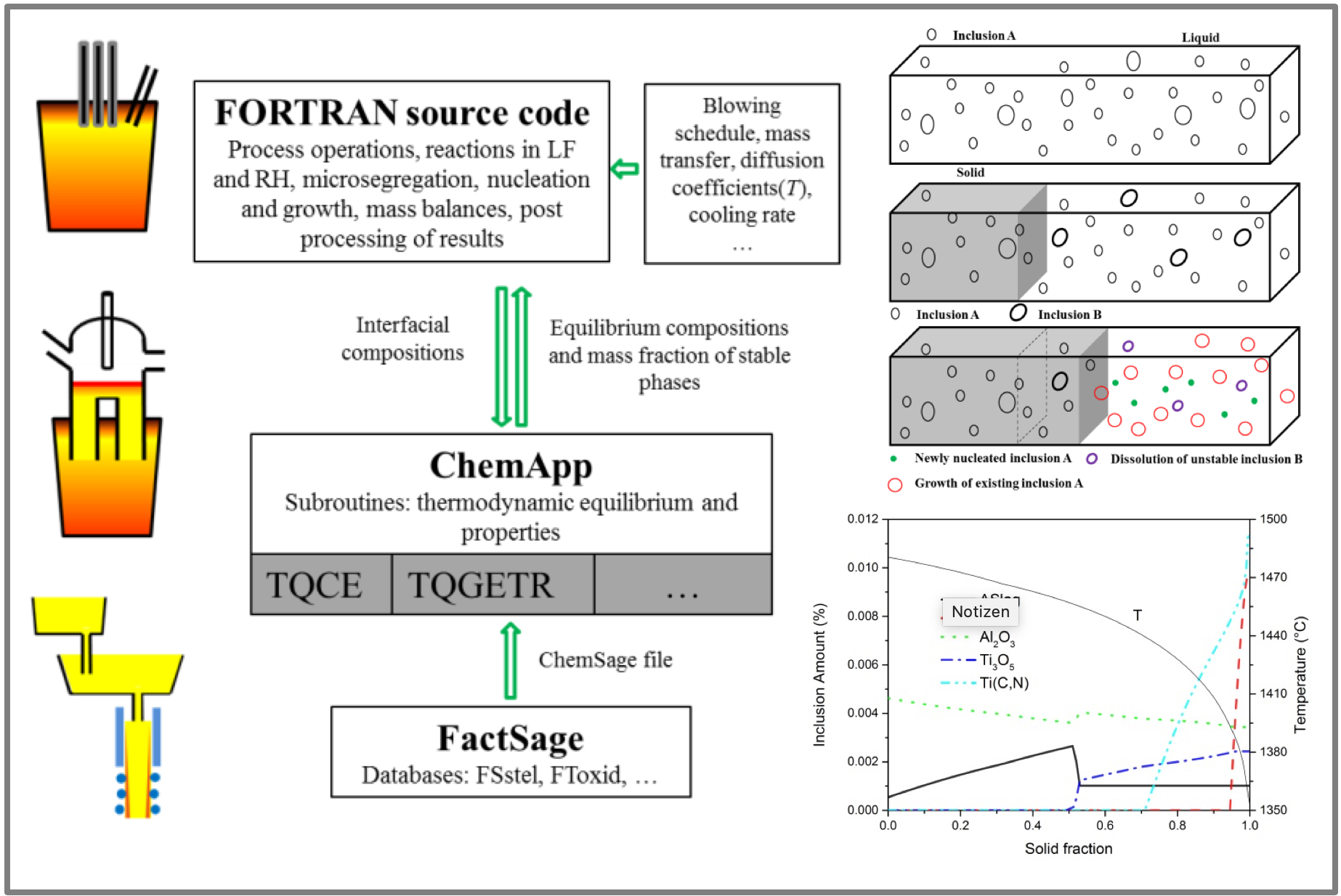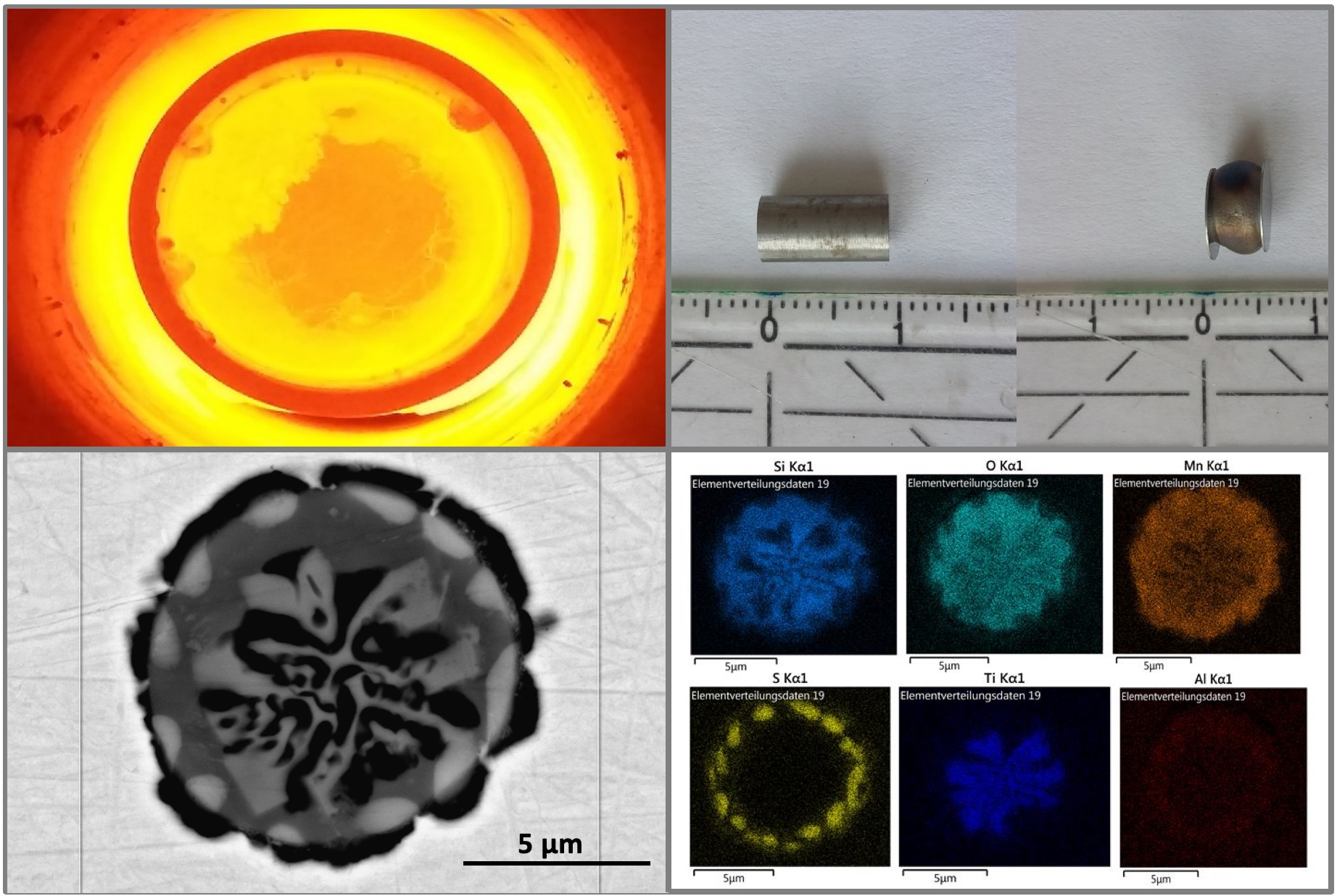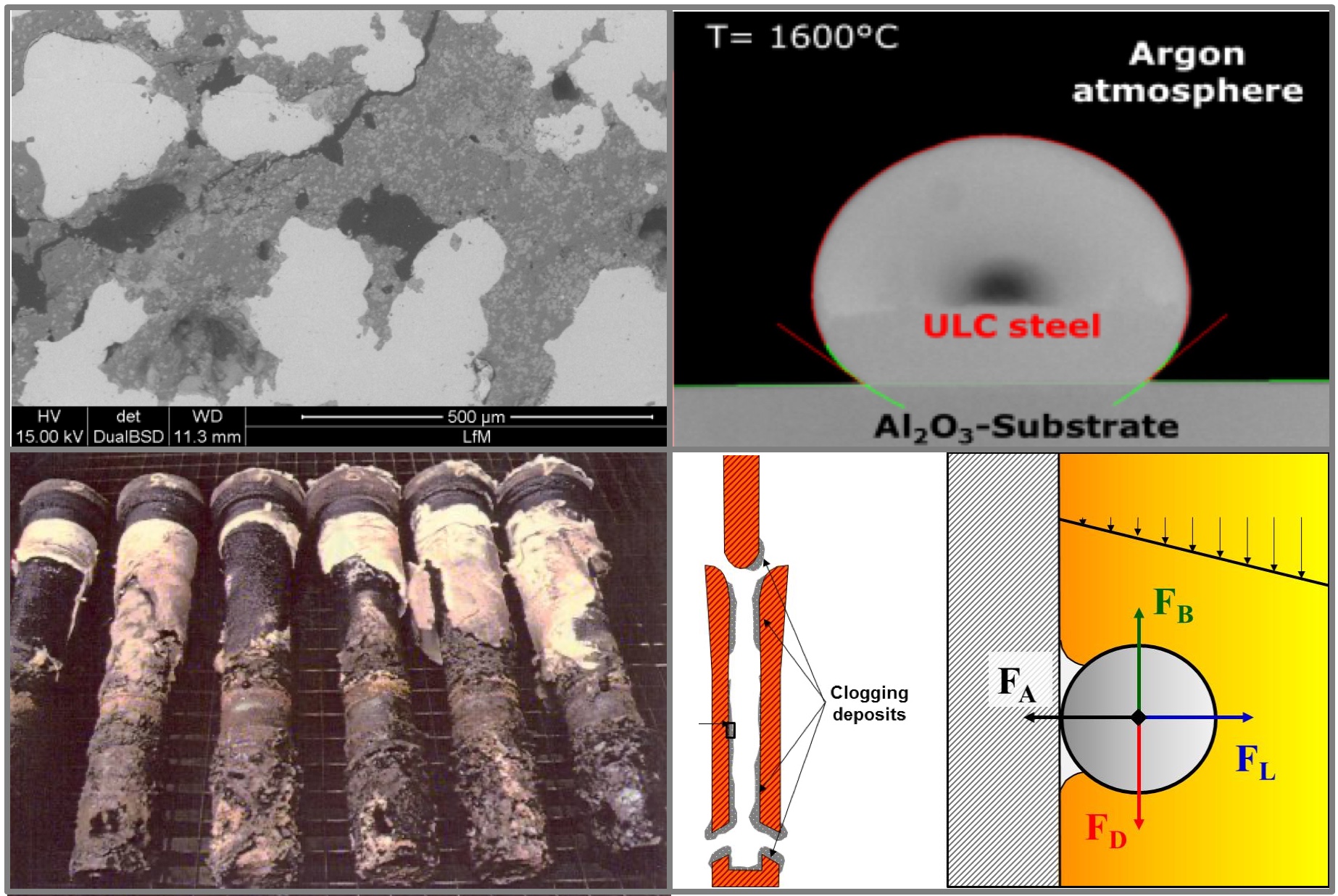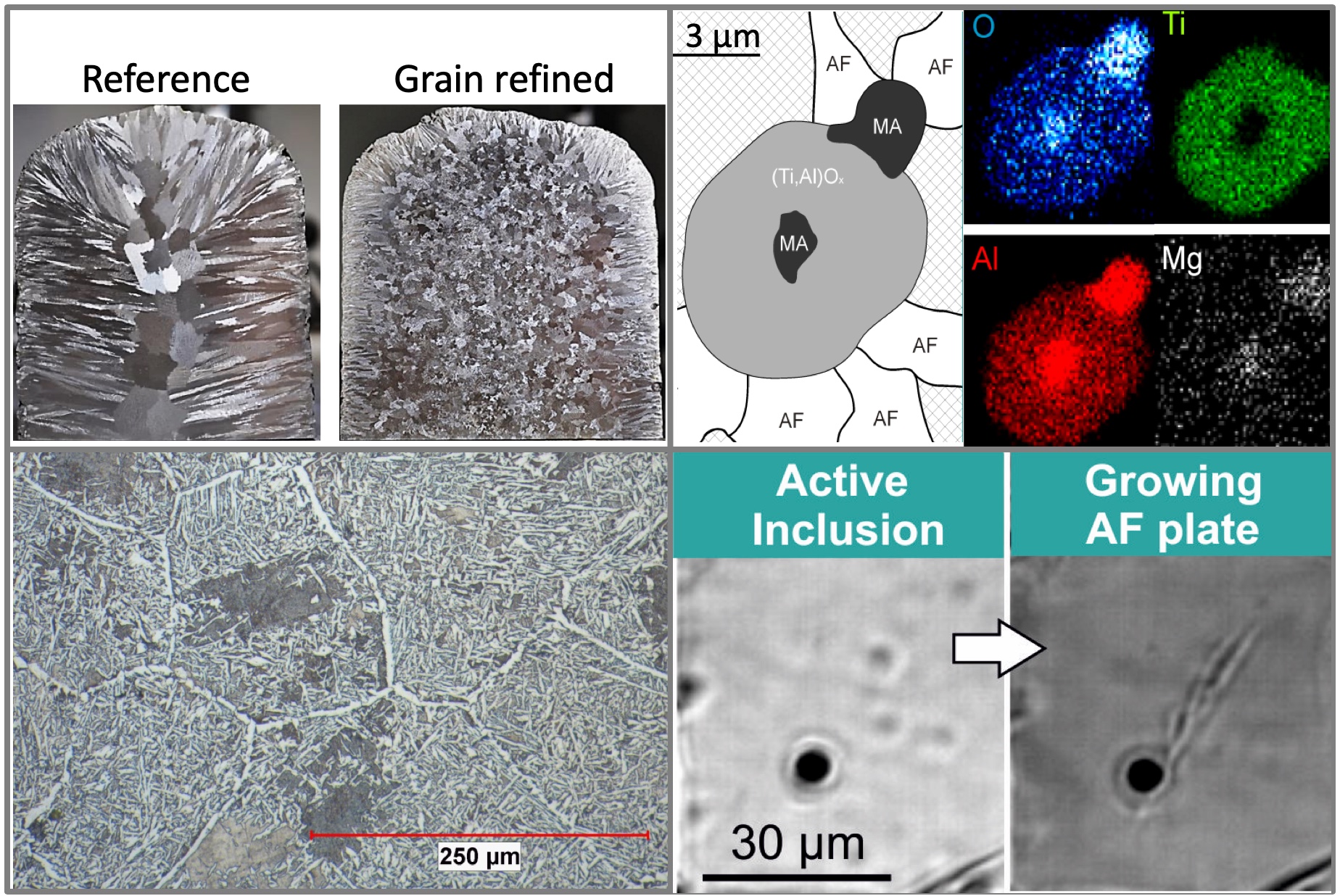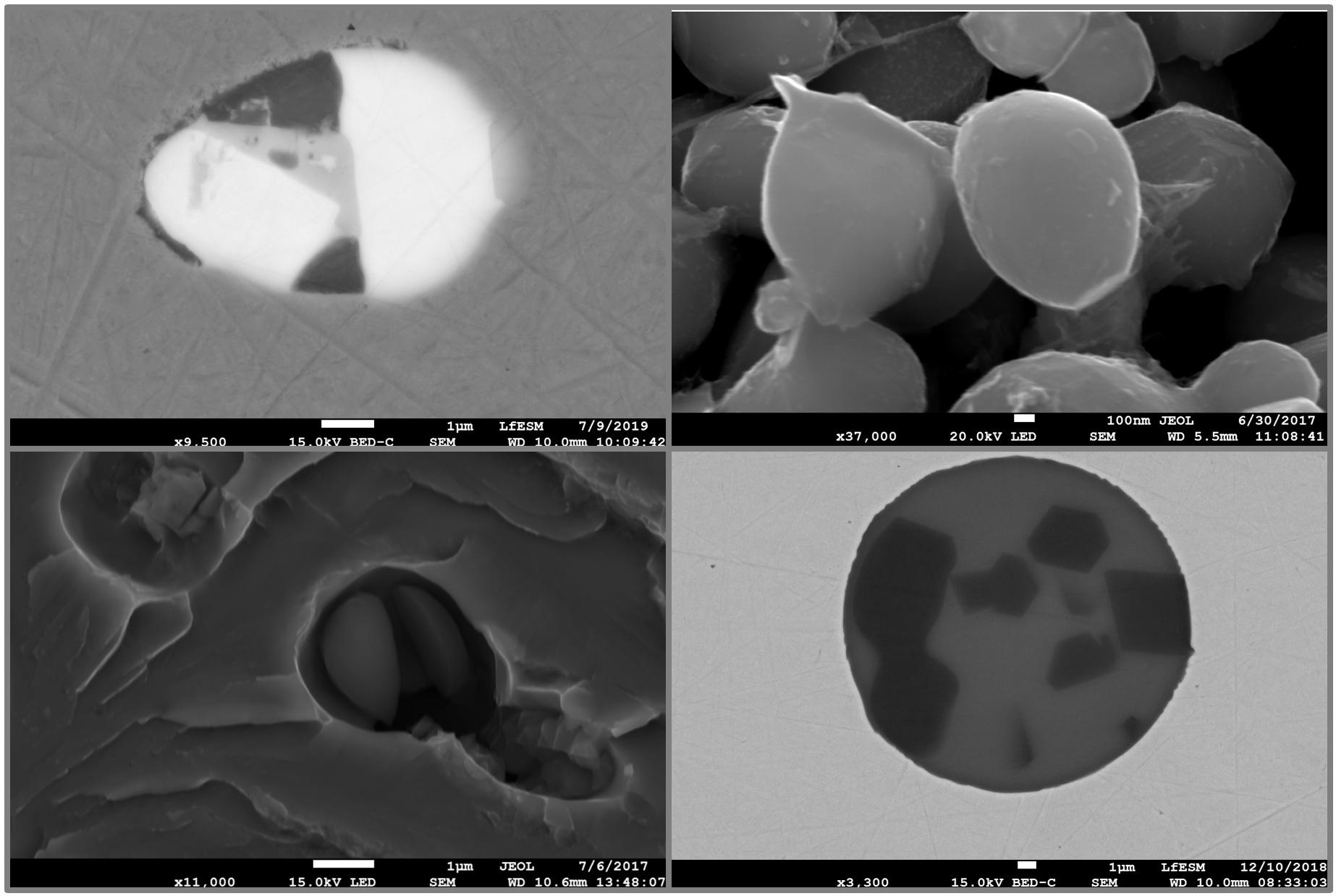The primary focus of this research group are divers questions concerning the cleanness of steels using different experimental and analytical methods as well as thermodynamic and kinetic calculations.
The cleanness of steels is an essential quality criterion for a wide variety of special steel applications. Non-metallic inclusions can initiate cracks or other material defects and can therefore be very harmful for material properties.
Due to the continuously increasing requirements on special steels, a reliable characterisation of the cleanness level is indispensable.
Furthermore, through a detailed analysis of inclusions over the process chain a better understanding of proceeding reactions can be gained. Based on this information, important indications regarding furhter process optimization are obtained.
With September 2021 the new Christian Doppler Laboratory for Inclusion Metallurgy in Advanced Steelmaking has started. More about us
Selected Publications
https://doi.org/10.3390/met10070860
https://doi.org/10.1007/s11663-018-1271-2
https://doi.org/10.1002/srin.201800635
https://doi.org/10.2355/isijinternational.ISIJINT-2016-243
https://doi.org/10.1002/srin.201500102
https://doi.org/10.1016/j.matchar.2014.12.014
https://doi.org/10.1007/s11665-018-3468-6



